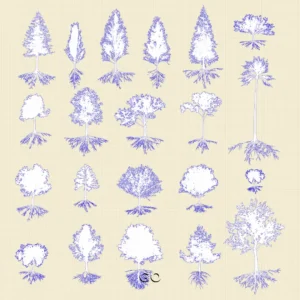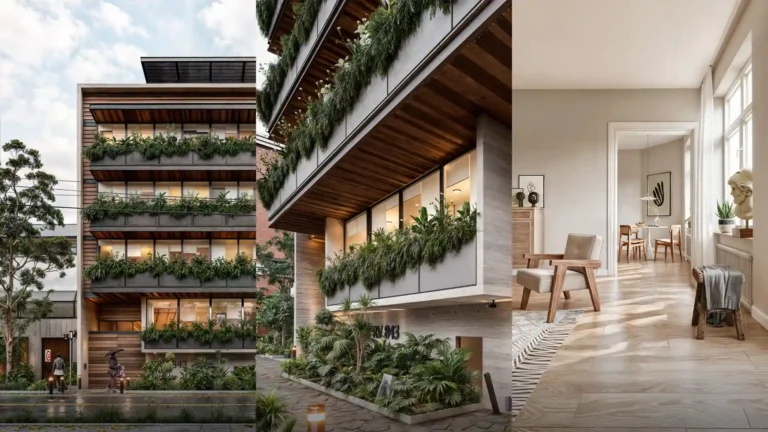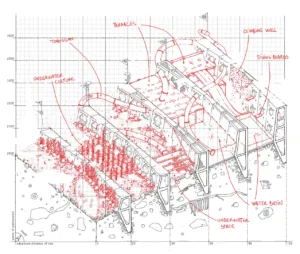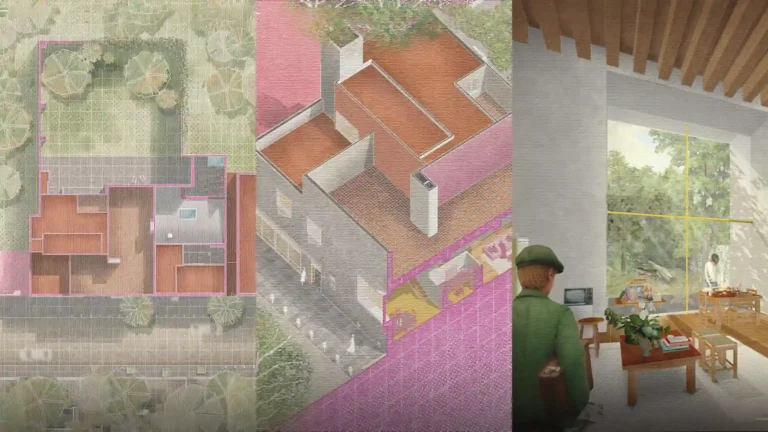Shelter for extreme weather / S A G A

- Architect: S A G A
- Location: Los andes, Chile
- Project: Hospitality architecture
- Software: Archicad, Photoshop
- Lead architects : Alexis Soriano - Alice Gier
The project’s purpose is to connect the land and the river routes on the trekking paths in the Andes mountain in Chile. Every year, deadly blizzards sweep the mountainsides; like in 2005, where 45 soldiers were killed, desperately looking for a shelter. In recent years, the region has gained the interest of tourists, who like to hike there in summer and in winter. Considering the dangers of the site and its tragic past, a shelter seemed essential.

The hut is made up of two double-height modular volumes, which rests on a bare semi-elevated framework. These volumes reinterpret the typology of local constructions and echo with the geographical elements in the surroundings such as the mountains, volcanoes and lagoon. This shelter contains a total of 49m2 that aims to promote ecotourism in the area and is a refuge in cases of violent storms, using wood as a meaning of identity memory and tradition. Extreme weather conditions and the particular topography, however, make the Antuco volcano a challenging area for construction. To build this safe space, light materials and an easy execution are essential. This project is a model shelter, conceived to be built easily in extreme places, with the capacity to withstand extreme weather, such as snow, wind, earthquakes, flood, etc.

Besides the foundations who needed to be solidly anchored in the soil with concrete, the structure is wholly made by wood. The density of the structure allows it to be built with small sections and lengths that can be easily transported. The structure itself is designed to support high charges and to dissipate dynamic forces such as wind and earthquakes. The slope of the roof allows the snow to slowly fall off, preventing it from causing too much overweight on the structure. The whole project is also thought to be auto-sufficient.

Solar panels and an additional battery make sure that the hut has power, even in the event of a snow storm for at least 3 days, so that rescue could arrive in time. The shelter has also a wood oven, so that even without electricity the hut could be heated. Thanks to the small volume and the thorough isolation, the shelter needs little energy to maintain its temperature, making it perfect for the Andes winter. In summer, natural ventilation allows it to cool the inside, just by the air flow created by the windows. The water falling on the roof will be collected and stocked in a water tank. This water is then filtered and can again provide the occupants of the shelter with the basic necessities.
Project gallery
Material
Wood
#tags
Related posts
Recommended courses
Essential resources
Related posts
Recommended Courses
5.00
(4)
Architectural illustration
5.00
(3)
Axonometric animation
Essential resources
-
Sale!

Pay 2 Take 4
USD $20.00Original price was: USD $20.00.USD $10.00Current price is: USD $10.00. Add to cart -
Sale!

Pot plant cut outs
USD $10.00Original price was: USD $10.00.USD $5.00Current price is: USD $5.00. Add to cart -
Sale!

Trees Roots – GO
USD $10.00Original price was: USD $10.00.USD $5.00Current price is: USD $5.00. Add to cart -
Sale!

Site Analysis GO
USD $10.00Original price was: USD $10.00.USD $5.00Current price is: USD $5.00. Add to cart -
Sale!

32 PATTERNS – GO
USD $10.00Original price was: USD $10.00.USD $5.00Current price is: USD $5.00. Add to cart -
Sale!

Colorful people
USD $10.00Original price was: USD $10.00.USD $5.00Current price is: USD $5.00. Add to cart -
Sale!

CARTOON TREES
USD $6.00Original price was: USD $6.00.USD $3.00Current price is: USD $3.00. Add to cart -
Sale!

URBAN ISOMETRIC MEGAPACK
USD $10.00Original price was: USD $10.00.USD $5.00Current price is: USD $5.00. Add to cart














